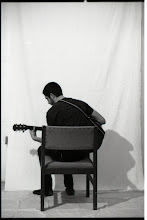For this project I first decided to define mapping for myself as the exploration and recording of something unseen or unnoticed. Keeping this in mind, I chose to map the flow of people on Oberlin campus at night. Although we can conceptualize the idea of movement we cannot actually capture it in one still frame, except with a camera. I decided to take several long exposures of various places on Oberlin campus that people commonly walked through. I viewed the campus as a kind of architectural space that consisted of many pathways that could be revealed and thus recorded. This thought produced the term flow in that when describing the “flow” of a building we are talking about the way people navigate the rooms. I organized my photographs as a journey from north to south campus. The narrative could be thought of as a journey to fourth meal from my room in Noah, therefore creating another mapped pathway. The fact that maps serve a purpose also informs this project. They are created so that others may follow them with an idea of where they are going and what they will see while going there. I not only wanted to map a pathway, but also reveal what could be seen as you follow it.


















